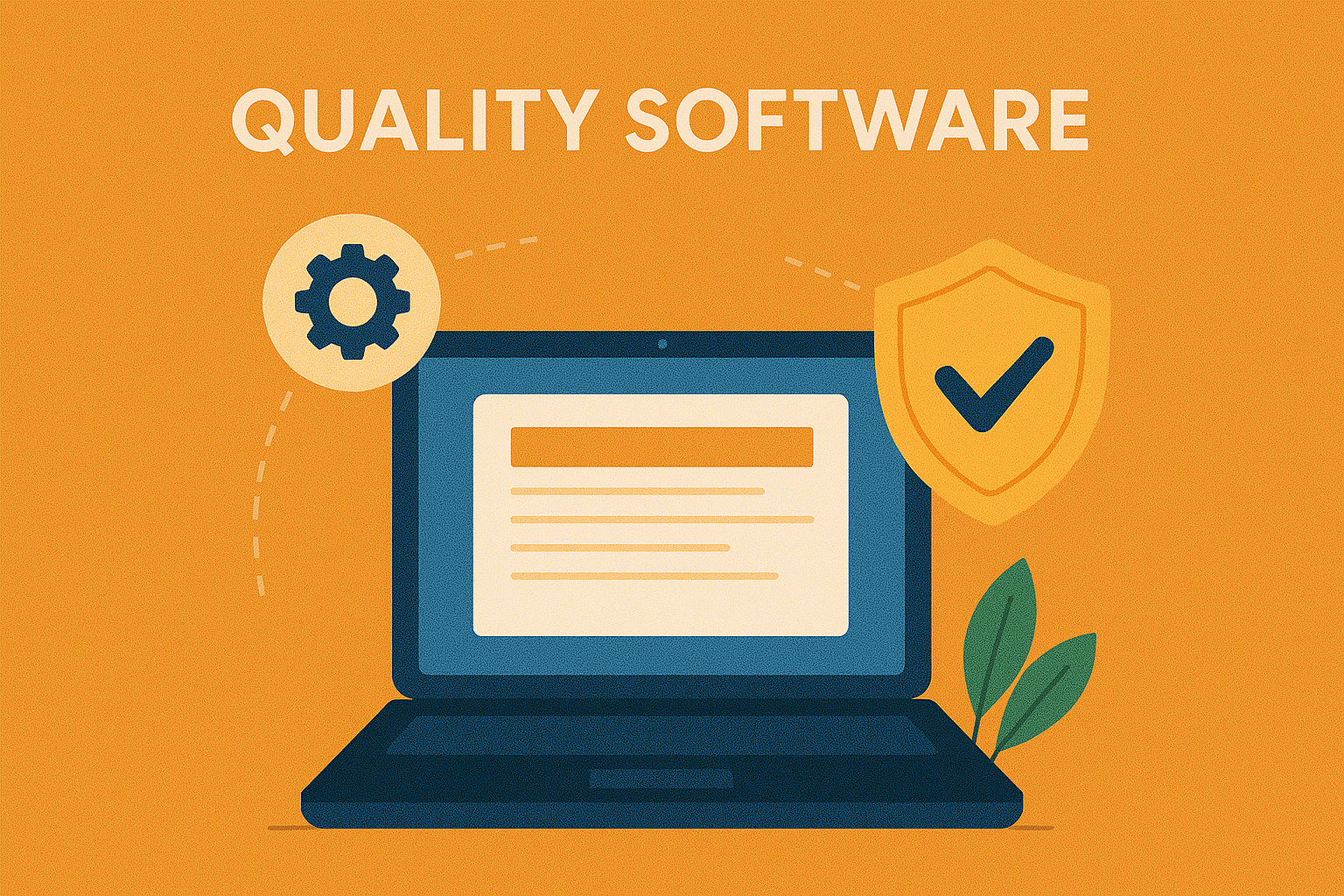Defining Quality in Digital Engineering: Beyond Just Working Software

"Does it work?" - That’s often the first question asked when evaluating a new piece of software. And while it’s a fair starting point, in modern digital engineering, it’s far from sufficient.
Working software is no longer the benchmark of success - it’s the bare minimum. The real question we need to ask is: Does it work well? Does it scale? Is it secure? Is it maintainable? Is it valuable?
In today’s complex digital ecosystems, quality must be redefined. It’s not a final checklist at the end of the process, nor the sole responsibility of testers. It’s a shared, end-to-end discipline - baked into every line of code, design decision, and team interaction.
Redefining Quality: A Multidimensional View
In digital engineering, quality is not one thing - it’s a collection of attributes that together define how well software meets user needs, business goals, and technical resilience.
Here’s what quality looks like when you step beyond “it works”:
1. Usability
Is the experience intuitive and accessible? Can users achieve what they need quickly and confidently? Quality software should delight, not just function.
2. Reliability
Does it behave consistently under normal and exceptional conditions? Is it resilient to failure and recoverable when things go wrong?
3. Performance
Is it fast, responsive, and efficient? Does it scale with demand without degradation? Performance is a user experience issue - not just a technical one.
4. Maintainability
Is the codebase clean, modular, and understandable? Can changes be made quickly and safely? A quality product must be easy to evolve.
5. Security
Are we safeguarding data, privacy, and integrity by design? Quality systems must protect against known risks and be able to respond to unknown ones.
6. Testability
Can we validate its correctness easily and confidently? High-quality software is provable - through tests, monitoring, and observability.
7. Adaptability
Is it designed with change in mind? Can it flex to meet new business needs, user feedback, or regulatory shifts without rework?
8. Value Alignment
Does it solve the right problem? Does it generate value for users and the business? Quality means building the right thing, not just building it right.
Quality is a Team Sport
Too often, quality is seen as the remit of QA or test engineers. But in high-performing teams, everyone owns quality.
Engineers design for testability and maintainability from day one.
Product managers validate that user needs and acceptance criteria reflect meaningful value.
Designers ensure that usability and accessibility are treated as non-negotiable.
Testers don’t just test - they coach, advocate, and automate.
Ops and SREs ensure systems are observable, resilient, and ready to scale.
This cross-functional ownership is critical. Without it, quality becomes a siloed afterthought - addressed too late, at too high a cost.
Embedding Quality into the Development Lifecycle
Quality isn’t a phase - it’s a continuous, integrated discipline. Here’s how to build it into the fabric of your delivery process:
✅ Start with clear, value-led acceptance criteria
Don’t define “done” in vague technical terms. Anchor it in user outcomes and non-functional expectations from the outset.
✅ Adopt Test-Driven and Behaviour-Driven Development
These practices shift testing earlier and focus the team on behaviour, intent, and design clarity - not just implementation.
✅ Automate where it counts
Automated unit, integration, and performance tests build confidence and speed. But balance this with exploratory testing to uncover edge cases and assumptions.
✅ Use monitoring as a quality signal
What happens in production matters. Instrument code for observability. Monitor user journeys, error rates, and system health to close the loop.
✅ Hold “Quality Conversations” early and often
In planning, design, and refinement sessions - ask: “How will we know this works well? What could go wrong? How might this evolve?”
Measuring What Matters
To shift the quality conversation, we need to move beyond binary “pass/fail” metrics. Instead, track indicators that reflect real-world quality:
Time to detect and recover from issues
Regression rates post-deployment
Test coverage on business-critical paths
Mean time to resolution (MTTR)
User satisfaction and task success rates
Ratio of tech debt to new feature development
These metrics help teams understand where quality is supporting or undermining outcomes - and where to invest next.
Key Takeaways
✅ Working software is only the start - quality means delivering software that’s valuable, resilient, and built to last.
✅ Quality must be owned by the whole team - not delegated to testers or phases late in delivery.
✅ Integrate quality into your workflows with automation, observability, and early collaboration.
✅ Measure real-world outcomes, not just code correctness.
✅ Quality isn’t static - it evolves as your users, systems, and business do. Treat it as a journey, not a checkbox.
In Closing
In a world where speed to market is vital, it’s tempting to treat quality as something that slows us down. But the reality is the opposite: quality is an accelerator. It prevents rework. It reduces incidents. It builds trust. And it enables sustainable delivery over the long term.
Let’s move beyond “it works” as the definition of success. Let’s aim for software that works well - for users, for teams, and for the future.
That’s what quality really means in digital engineering.
Engineering leader blending strategy, culture, and craft to build high-performing teams and future-ready platforms. I drive transformation through autonomy, continuous improvement, and data-driven excellence - creating environments where people thrive, innovation flourishes, and outcomes matter. Passionate about empowering others and reshaping engineering for impact at scale. Let’s build better, together.
